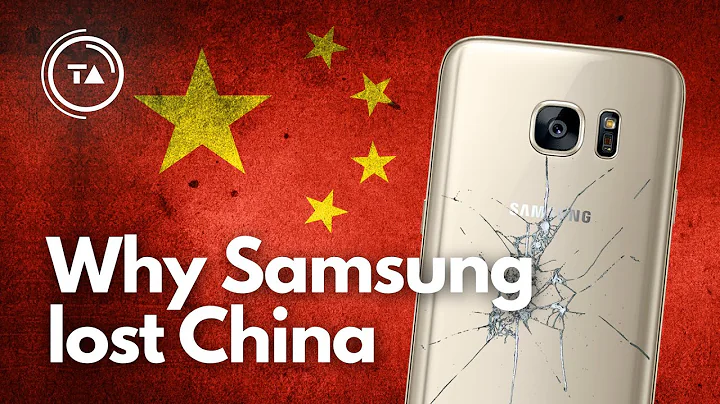
▲A customer takes photos with his mobile phone. Photo by Xinhua News Agency reporter Li Muzi
How long has it been since you changed your mobile phone? Many consumers have reported that they have not purchased a new mobile phone or tablet for a year or two or more. has gone from "must be replaced when new comes out" to "not replaced for many years". The frequency of consumers replacing consumer electronic products with has dropped significantly. Reflected on the supply side, domestic shipments of consumer electronics products have declined.
Why don’t consumers like to change their mobile phones? What signal does this send to the consumer electronics industry?
The frequency of mobile phone replacement is reduced
"I bought this mobile phone in 2019 and have used it for 2 and a half years. Although the power loss is a bit fast, there are no major problems with the mobile phone overall and the response speed is also good." in Zhengzhou, Henan Wang Shicheng, who works, said that his mobile phone is mainly used as a social networking and browsing tool. He does not play games and does not have high requirements for mobile phone functions. If there is no new mobile phone that he particularly likes, he will not change it yet. Different from previous years when there was a wave of replacements every time a new mobile phone was launched, the frequency of replacement of mobile phones by domestic consumers has decreased, and a mobile phone can generally be used for one to three years.
This trend is reflected on the production side, reflected in the decline in shipments in the domestic mobile phone market. According to data from the Ministry of Industry and Information Technology, in May this year, the domestic mobile phone market shipped 20.805 million units, a year-on-year decrease of 9.4%. From January to May, the total mobile phone shipments in the domestic market totaled 108 million units, a year-on-year decrease of 27.1%. Data from the China Academy of Information and Communications Technology show that in February this year, domestic mobile phone sales hit a new low in the past 15 months, reaching 14.864 million units. In comparison, for the whole of 2021, the total mobile phone shipments in the domestic market totaled 351 million units, a year-on-year increase of 13.9%.
With the popularity of 5G, the industry originally expected that this would lead to continued sales of 5G mobile phones. However, data from the Ministry of Industry and Information Technology show that in the first five months of this year, 5G mobile phone shipments were 86.207 million units, a year-on-year decrease of 20.2%. Although they accounted for 79.7% of mobile phone shipments in the same period, sales were far less than the previous year.
Yang Xixi, a "post-95s generation", said that she just changed to a 5G mobile phone in October last year. "The main reason is the good appearance of this phone. The ceramic body and the camera hidden under the screen greatly improve the appearance of the smartphone." . Since you want to change, it is better to change to the latest 5G mobile phone.”
The author found in the interview that most consumers who have used their mobile phones for less than one year use 5G mobile phones, while most consumers who have used their mobile phones for more than 2 years are still using 4G. cell phone. "4G mobile phones are also very easy to use, and I will not change my mobile phone just because 5G comes out. However, the next time I change my mobile phone, I will consider choosing a 5G mobile phone." Wang Shicheng said.
In addition to mobile phones, tablet sales have also declined. According to data released by Canalys, in the first quarter of this year, China's tablet computer shipments were 4.7 million units, a year-on-year decrease of 13%, and shipments continued to decline.
"I bought a tablet in 2020, mainly for watching videos and taking notes." Zhang Chen, who is studying at a university in Guangdong, said that this tablet, which costs about 2,400 yuan, has been used for almost 2 years. It has accelerated somewhat, and there is no lag so far. "Although this tablet is not a new model, it can meet my daily needs, so I have no plans to replace it yet."
Data from the National Bureau of Statistics shows that in May, the retail sales of communication equipment products for units above designated size was 39.4 billion yuan. A year-on-year decrease of 7.7%. Since the beginning of this year, sales of consumer electronics products have declined significantly.
It is worth mentioning that the slowdown in update frequency and declining sales of consumer electronics products is a global phenomenon. Global smartphone shipments in the first quarter of this year were approximately 310 million units, a year-on-year decrease of approximately 11%. According to data released by Canalys, global shipments of wearable wristband devices fell by 4% in the first quarter to 41.7 million units.
Some electronic products are not attractive enough
Why has the sales of consumer electronics products slowed down?
"There is nothing wrong with old mobile phones" "The new models launched by manufacturers have no new highlights"... Many consumers said that on the one hand, the quality of consumer electronic products is relatively stable. In recent years, the quality of batteries and other components has improved significantly. 2 years is no problem. On the other hand, the new products launched by manufacturers are not attractive enough. Although they have some icing on the cake new features, they are not enough to attract consumers to upgrade.
Wang Liying, an engineer at the Information Policy Institute of the National Industrial Information Security Development Research Center, analyzed that global smartphone sales have declined due to the impact of the epidemic. On the demand side, in the past two years, the demand for working from home, distance learning, and online entertainment during the epidemic has brought about rapid growth in the sales of consumer electronics products. With such needs basically being met, the market for products such as smartphones and tablets has Demand has returned to stability, and sales have declined year-on-year. On the supply side, since March this year, due to the impact of the epidemic, production and transportation of the consumer electronics industry chain in many places in China have been blocked, and shipments of consumer electronics products have declined, affecting exports. Internationally, the epidemic has prevented key links in international logistics such as distribution, transportation, and warehousing from being connected in a timely and efficient manner. Global transportation costs have increased significantly, which has affected the sales of consumer electronics products produced in China in the international market. Chinese mobile phone manufacturers such as OPPO have exported to some countries. Volume is reduced.
"What's more important is that there is insufficient innovation in consumer electronic products. After the basic needs are met, they have no new appeal to consumers." Wang Liying analyzed, In recent years, the form changes of electronic products such as smartphones and tablet computers have tended to be Stagnation, most of them only make minor adjustments in functionality, lack transformative innovation, and are difficult to stimulate consumers' willingness to shop.
According to data from the Ministry of Industry and Information Technology, from January to May this year, a total of 167 new domestic mobile phone models were launched, a year-on-year decrease of 7.7%, including 87 5G mobile phones, a year-on-year decrease of 3.3%.
Chen Cheng, who is engaged in data analysis, is very concerned about consumer electronics products. “I have found that in recent years, tablet computers are often different from older models in terms of screen size, shooting pixels, and memory size. Some focus on education and reading functions. To create differentiation, but the core functions have not changed. For ordinary consumers, as long as a tablet does not freeze and has sufficient battery life, the willingness to replace it is not that strong.”
In addition, major brands in the market are targeting high-end products. market, product prices are gradually rising. Data from shows that the average selling price of smartphones will increase by 10% year-on-year in 2021. Take domestic smartphones as an example. In recent years, the price of many new models has exceeded 4,000 yuan, and the price of folding mobile phone has exceeded 10,000 yuan. High prices have reduced consumers’ willingness to upgrade to a certain extent.
"The consumer electronics market is saturated, and the old products in users' hands can still be used, while new product innovations are limited and prices are high, making it difficult to attract consumers to buy." Zhang Xiaorong, an expert who has been dedicated to research in the field of technological innovation, analyzed, If the cost performance of the end product is not enough to impress consumers, sales will slow down.
Consumers expect more innovations
Every year on e-commerce promotion festivals such as “6·18”, the sales of consumer electronic products tend to see a significant increase. During this year's "June 18" period, many consumer electronic products were heavily promoted, and large discounts were used to attract consumers, such as direct price reductions, gift certificates, etc., which achieved certain results. According to the person in charge of Xiaomi , Xiaomi has made efforts both online and offline. During the "6·18" period, the sales volume of Xiaomi Home mobile phones increased by 28% year-on-year.
However, according to industry insiders, the key to breaking the situation lies in whether manufacturers can improve the user experience and stimulate consumption through innovation.
Wang Liying believes that consumer electronics companies should make full use of digital technology to carry out all-round, multi-angle, and full-chain transformation and application of production, operations, management, marketing and other links. This is the key to improving operating efficiency and empowering product sales. Expressway.
Industry companies have recognized the importance of current consumer electronics innovation. A relevant person in charge of Xiaomi said that in the next five years, Xiaomi will invest more than 100 billion yuan in research and development. At the same time, it will firmly promote new retail reforms and stimulate corporate resilience and vitality by promoting digitalization and business innovation. OPPO stated that it will continue to invest a lot of research and development resources in folding screen mobile phones in the future. realme launched its first tablet product on June 11, and will continue to develop the AIoT ( artificial intelligence Internet of Things) ecosystem in the future.
Many experts suggested that manufacturing companies should actively deploy and expand other products with high growth potential. For example, AR/VR component applications, smart wearable devices, various equipment required for smart driving, etc. may be the innovation points that lead the next wave of consumer electronics industry boom.
Although sales in the first half of the year were not satisfactory, related companies still have confidence in the market in the second half of the year. Data from the China Academy of Information and Communications Technology shows that in October, November and December 2021, domestic smartphone shipments were 33.6 million units, 35.252 million units and 33.4 million units respectively, a year-on-year increase of 28.4%, 19.2% and 25.6% respectively. , is the month with the highest sales volume throughout the year. Wang Liying analyzed that in the second half of the year, as the epidemic gradually stabilizes, the resumption of work and production is promoted in an orderly manner, and various local consumption policies are effective, the entire consumer electronics market is expected to pick up with the recovery of the national economy and the release of consumption capacity. "However, , to achieve high growth like in previous years, companies still need to develop products that can bring new experiences to consumers.”
Source: People’s Daily Overseas Edition
Reporters: Xu Peiyu, Li Jie
.




![Best camera settings [ iPhone ] - DayDayNews](https://i.ytimg.com/vi/jyYFYPHowI0/hq720_2.jpg?sqp=-oaymwE2CNAFEJQDSFXyq4qpAygIARUAAIhCGABwAcABBvABAfgBlAOAAtAFigIMCAAQARhlIF8oQjAP&rs=AOn4CLAg0x-TUXda5DPHZHQcvynPY7pDhQ)















